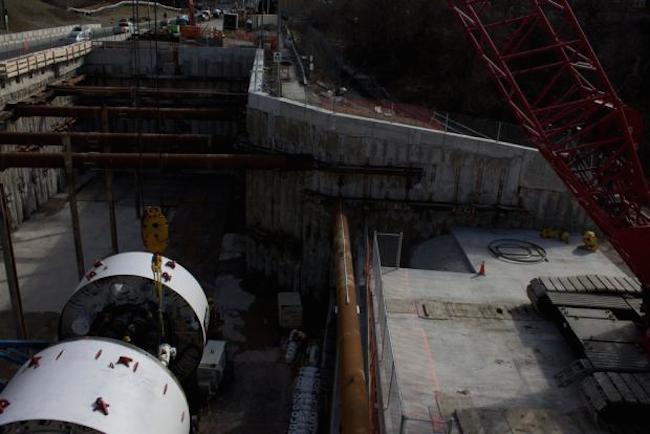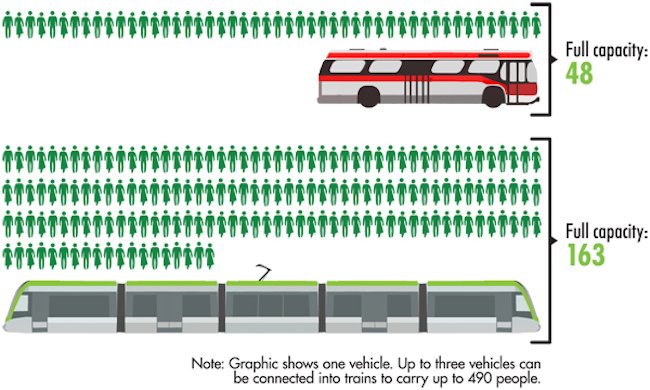We like to keep you posted on what’s happening with transit in Toronto, especially because of E Condos’ direct access to the Yonge subway line and the Eglinton LRT. Construction began on the Eglinton Crosstown LRT this time last year, and there’s been tons of progress. Let’s see what’s happened in the past 12 months.
The biggest news? Construction is well underway for the Eglinton Crosstown LRT, especially underground where it seems to be coming along quite smoothly. The team has faced some challenges and delays above-ground, which is to be expected since things have to be moved out of the way, water pipes have to be shut off, and there are also current stations that also need to be worked on.
According to the Toronto Star, the delays are from the work required to pour “headwalls,” which is what the underground stations need before the boring machines get there. Keele and Caledonia subway stations have been poured, and now the crew is working on Dufferin station.
Remember Dennis the tunneling machine? Last June, media outlets reported that the first of the two tunneling machines (AKA Dennis) entered the ground at Black Creek Drive – and now it’s made it to Caledonia Road, followed by the second tunneling machine, named Lea.
Regardless, even with the hurdles, things are right on track and the Eglinton Crosstown LRT is now exactly where it should be on the schedule. Crews are working on the project 24/7 and they’re hoping to get the Eglinton LRT completed and carrying passengers by 2020. The crew aims to tunnel about 12 metres a day, which might seem like a short distance, but it takes quite a bit of time and machine-power.
Though the Eglinton Crosstown LRT is considered Ontario’s most expensive public transit project in more than half a century, it will be worth it when it’s done thanks to the line connecting 25 stations, with links to 54 local bus routes, three TTC interchange subway stations, and the GO. That’s thousands and thousands of passengers being carried on the LRT daily.
Other than the fact that construction is well underway, there’s also a discussion on whether the trackway will be made of gravel or grass. Grass is definitely more appealing than gravel, and it’s already used as a trackway in Barcelona and Hamburg, but it would cost a bit more than gravel. We’ll keep you posted on this topic, so be sure to follow us on Twitter so you’re in the know!




